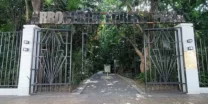By Reian Musngi
LIKE the phenomenal Hallyu of the 1990s, they came in waves, too.
It was in the early 2000s when South Koreans first swept into the Philippines in their own Korean Wave, or Hallyu in transliteral Chinese.
Albeit small-scale, the migration was notable, a ripple effect of South Korea’s remarkably quick recovery from the Asian Financial Crisis of 1997 and the trade and investment policy reforms the high-technology country undertook after.
This South Korean wavelet was also attributable to the Philippines’ reputation as a country with high English proficiency, a plus for multinational companies operating in the global corporate language. This strength combined with lower operating costs has since attracted high-tech giants such as Samsung Corporation, Korea’s largest chaebol or conglomerate.
By 2001, two of Samsung’s subsidiaries were fully operational in an ecozone in southern Luzon. That expansion by Samsung alone brought with it mid-level management professionals often with their small families in tow, numbering at least 20 families per subsidiary.
Hello, Philippines
One such family was headed by professionals Young Cheol and Kyung Hee who moved to the Philippines in the year 2000.
Then General Manager for a Samsung subsidiary, Young Cheol was offered a compensation package that included housing, transportation, and schooling for the children. He and wife Kyung Hee, an elementary school teacher, instinctively brought their children to experience a different learning environment.
“If we had not come with the children, they would have studied like every other Korean student,” explains the couple. “Every day, they would have gone to school. After school, off to after-school classes.”
These after-school classes are provided by cram schools, or hagwon in Korean, which are private academic institutions offering tutorial classes across subjects, especially high-demand English classes. Hours in a hagwon can be long and grueling, usually running until midnight.
Well-rounded
Moving to the Philippines allowed the family to do away with hagwon while their children attended an international school and naturally acquired English. The children also pursued interests that a Korean education would have restricted.
“In the Philippines, our children not only learned English but also played sports and musical instruments,” the couple says. “In Korea, most students only study to get into university.”
The stuff of satires, college admissions in South Korea is a highly competitive marathon that starts from elementary school. Parents send their children to hagwon to hurdle entrance examinations into either science or foreign language middle and high schools. Hagwon, plus private tutorials for some, then prepare college-bound students for English proficiency exams such as TOEFL and IELTS, even the US college admission test SAT.
And then there is the country’s own notoriously difficult College Scholastic Ability (CSAT), or Suneung in Korean. Administered only once a year, the 8-hour standardized test is taken by high school seniors for placement into some 200 universities in the country.
Increasingly, however, Suneung has become a student’s ticket to universities in the capital Seoul, outside of which a student is forced to take a gap year and retake the test. Often, the end goal is to break through “SKY”– Seoul National University, Korea University, and Yonsei University– South Korea’s Ivy League.

Yonsei University, one of Korea’s top schools
The couple, now happily retired after seeing both their children graduate from Korea University, recommends relocating to the Philippines to anyone given the chance.
“We did not want our children to simply study,” the couple says. “We wanted them to have rich life experiences.”
The obvious choice
For Young Hee and husband Sung Woo, the choice to relocate to the Philippines was a no-brainer: it meant a less-pressurized education for their children and a chance to stay together as a family.
In 2011, Young Hee took an extended leave of absence as a middle school English teacher so thar she and their two daughters could be with Sung Woo, a software engineer for Samsung. What was originally planned as a three-year stint in the Philippines has since extended to an 11-year stay during which their daughters attended an international school.
“It would have been very difficult for our daughters to attend high school in Korea and then enter good universities in Seoul,” reveals Young Hee. “The competition is very tough.”
In fact, she thinks their daughters could not have gotten into South Korea’s top universities without what Koreans call teukrae, a Korean portmanteau meaning “special case.”
These cases refer to schooling abroad, which can be as short as three years but must include a year in high school, or as long as 12, from first to twelfth grade. Only then can Korean students abroad have the advantage of applying to Korean universities “with specs,” Korean-speak for college applications using high school credentials only, bypassing the country’s infamous CSAT.
Schooling abroad, says Young Hee, allowed their daughters to avoid the cutthroat college admissions back home. Their older daughter now attends Singapore’s Nanyang Technological University while their younger daughter pursues Medicine in South Korea’s Chung Ang Medical School.
Other than sending their daughters to prestigious universities, Young Hee says she is grateful that living in the Philippines meant that their family never had to live apart until the children went off to college.
“We wanted to be together as a family,” she says. “That was our choice from the start.”
Missing the fam
For siblings Eun Bin and Seo Jun studying in the Philippines meant making the difficult choice of living away from their gireogi appa.
Peculiar to Korean lexicon, gireogi appa (literally “wild goose dad”) refers to a father who lives apart from his wife and children who live abroad to take advantage of English-based education in countries like the US, Canada, and the closer-to-home Philippines.
“We chose the Philippines because our two other options, the US and Australia, are too far for our parents,” Eun Bin explains. “So several months of packing was rounded by just a four-hour flight.”
While the siblings initially moved to the Philippines with both parents in 2012, their father had to return home to run the family business, which ostensibly funded the family’s life abroad. The siblings say many gireogi appa like their own literally go the extra mile, seasonally migrating to be with family abroad.
The word gireogi has also been applied to households with that setup. In 2010, the number of gireogi households in South Korea was estimated to be at half a million.
“Our parents wanted us to be fluent in English, which is always a competitive advantage for Korean students returning home,” Seo Jun explains. “In the end, our parents decided to send us to the US for college because Korean college competition is harder than ever.”
Products of both local private and international schools in the Philippines, the siblings now attend separate universities in the US— the University of California San Diego and the University of Illinois-Urbana Champaign.
“I think our life and education in the Philippines have prepared us for the independence we enjoy right now,” Eun Bin shares. “But our life back in Korea– our parents– is what keeps us grounded and directed.”
They continue to come
Over two decades later, a steady wave of South Koreans continue to roll in, many choosing to reside in Metro Manila as well as the metros of Cebu, Pampanga, and Baguio.
In a data snapshot published by the University of the Philippines Centre International de Formation des Autorités et Leaders (UP CIFAL) in 2018, there were over 93,000 Korean migrants residing in the Philippines only the year prior, over 10 percent of whom were students.
While transient, these students thrive in the English-based education private Philippine schools provide, no doubt shoring up an important segment of the country’s educational system unaware of its own tidal force.








